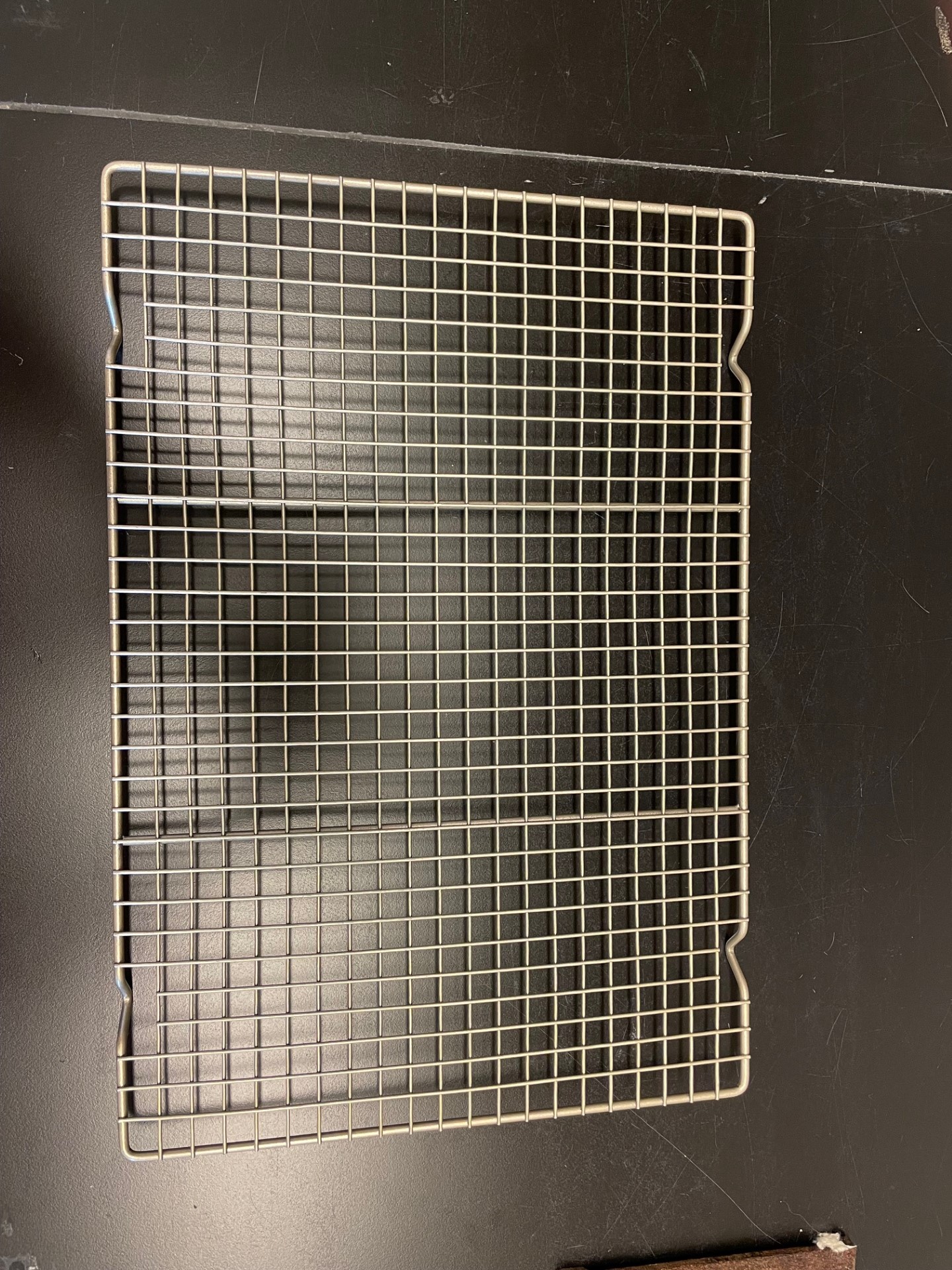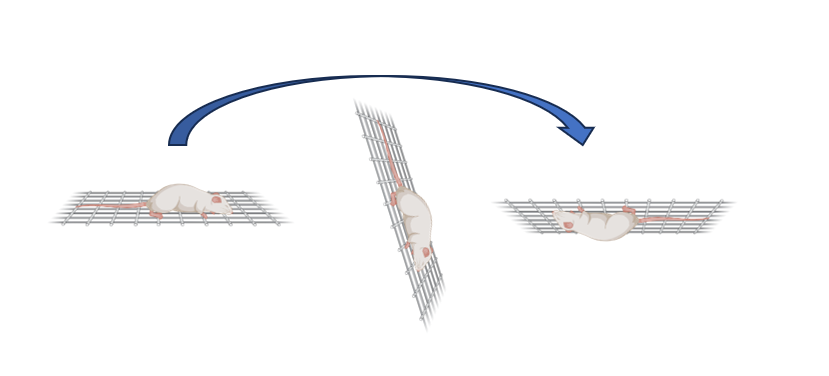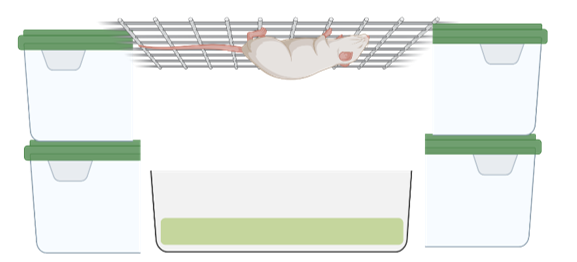Wire Hang Assessment
Ian N Krout, Alexandria White, Tim Sampson
Abstract
The wire hang test for mice is a simple and cheap way to asse motor and neuromotor pathologies in the mouse model. Described herein is an adapted protocol from Deacon 2013.
Steps
Apparatus
A wire hang apparatus can be made easily for use in this protocol and requires very little material (see Figure 1 for example). The apparatus should be easily traversed by the mice, meaning the spacing of the bars should be close enough to allow for free and easy movement of the mice and the width of the bars should be thin enough to allow for full grip by the paws. According to a protocol by Deacon, 2013 the ideal measurements are as follows. “The inverted screen is a 43 cm square of wire mesh consisting of 12 mm squares of 1 mm diameter wire (Figure 1). It is surrounded by a 4 cm deep wooden beading (which prevents the occasional mouse which attempts to from climbing on to the other side)”

Acclimation
Bring mice up from vivarium in their home cage to acclimate for 1h in the behavior room (or whatever location assessment takes place) prior to wire hang assessment.
Assessment
Randomize the order of mice for assessment and record the coding in the lab notebook.
Begin by taking the first mouse out of its home cage and place the mouse, stomach down, onto
the top of the wire hang apparatus. Make sure to the place the mouse facing away
from you in the center of the wire hang screen.
Slowly rotate the wire hang apparatus with the head of the mouse declining first (away from
your body) making a full 180 degree rotation and placing the apparatus back in the start
position (the mouse should now be hanging with its back facing the bench)
(Figure 3).

Start a stopwatch and record the amount of time the mouse is able to hang on the
screen. If the mouse reaches 120 seconds remove it from the screen and record
this time.
Note that mice may try to climb up and over the apparatus, if this happens, reposition the mouse and flip the screen again.
The mice may also try to grab onto the side of the cages used to suspend the screen
causing early falling, make note of this.
Repeat this 2x for a total of 3 trials, allowing the mouse to recover by roaming the
cage with bedding for ~1 minute between trials.
Move onto the next mouse until all mice are assessed.
Scores are recorded as either the average of 3 trials or as independent trials showing
all 3 runs. In a normal situation – the mice will be able to hang for less and
less time each subsequent trial.


